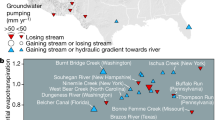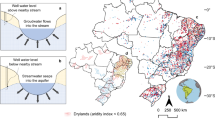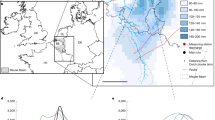Abstract
THE observations made by Mr. Maw on a stream flowing into the Lake of Thun are an extremely interesting example of wellknown hydraulic laws. It would be well, however, if he would tell us what was the depth of the water; from the observed phenomena I presume it was small. Mr. Smith's very ingenious mode of practically showing the different strengths of a current from surface to bottom should also be supplemented by an account of the size of the stream operated upon. The situation of the point of greatest velocity varies considerably with the conditions of the river or stream, and is by no means fixed. The observations made on some large rivers, notably those by Mr. Revy on the large rivers of South America, seem to show that the greatest velocity is, in such cases, almost, if not quite, on the surface, and that from that point it diminishes uniformly downwards to the bottom. The ratio between the surface and bottom velocities is, however, a constantly changing one, and in large rivers varies with the depth of the water. Mr. Revy's observations seem to show that in large rivers, where the influence of the banks is practically inappreciable, the surface velocity varies directly as the depth, whilst the bottom velocity varies as the square of the depth; as the depth increases, the difference between the top and bottom currents diminishes, until at a depth of about 71 feet they are practically equal. These results are borne out by the observations of Messrs. Humphreys and Abbott on the Mississippi and Mr. Gordon on the Irrawaddy. All observations to be useful, therefore, should give the size of the river or stream operated on. If Mr. Smith has not seen the diagrams given by Mr. Revy in his “Hydraulics of Great Rivers,” I think he would be interested in them.
This is a preview of subscription content, access via your institution
Access options
Subscribe to this journal
Receive 51 print issues and online access
$199.00 per year
only $3.90 per issue
Buy this article
- Purchase on SpringerLink
- Instant access to full article PDF
Prices may be subject to local taxes which are calculated during checkout
Similar content being viewed by others
Rights and permissions
About this article
Cite this article
HIGGIN, G. The Flow of Streams. Nature 30, 560 (1884). https://doi.org/10.1038/030560b0
Issue date:
DOI: https://doi.org/10.1038/030560b0



